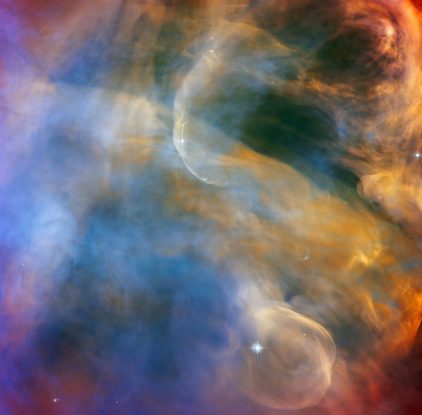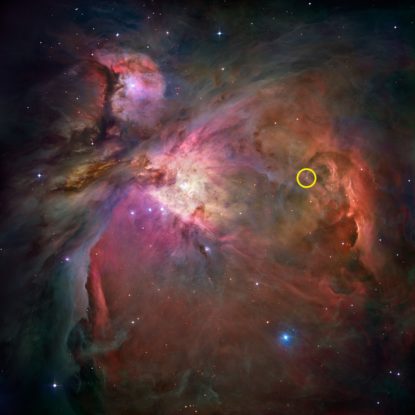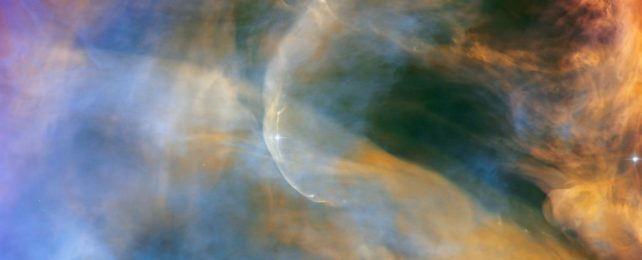One of the most beautiful and spectacular regions of the night sky can be found in the constellation of Orion.
Between the stars Alnitak, Saif, and Rigel, floats a vast, thick cloud of interstellar dust and gas. This is the Orion Nebula, a nest of material in which baby stars are being born and one of the most studied and photographed objects in the Milky Way.
Spanning 24 light-years, it's so close and large that it's visible to the naked eye.
Because of its relative proximity (around 1,344 light-years from the Sun), this spectacular cloud is an important laboratory for understanding star formation.
You just have to zoom right in, and peer closely at the details.

This new Hubble image release of the Orion Nebula looks like wisps of delicately tinted cloud peacefully doing their cloud thing against the velvety dark backdrop of space… but in the middle is a rare and wonderful cosmic interaction, triggered by the baby star IX Ori.
That interaction, called HH 505, is what is known as a Herbig-Haro object. Forming them requires a very particular set of circumstances.
First, you need a baby star. These form when a dense knot in a molecular cloud, such as the Orion stellar nursery, collapses, spinning, under its own mass. As it spins, it spools in material from the cloud around it, which allows the baby star to grow.
As this material accretes onto the baby star, powerful jets of plasma can be launched from the star's poles. It's thought that some of the material that swirls around the star is diverted along the star's external magnetic field lines to the poles. These magnetic field lines act as a particle accelerator so that, when the material reaches the poles, it is launched at incredible speeds.

A Herbig-Haro object forms when these jets, traveling at incredibly high speeds, slam hard into the surrounding gas, shock-heating it so that it glows brightly. This creates what appears to be two glowing rods of light emanating from the baby star.
These structures change rapidly, so astronomers can study them to understand how baby stars blow away material from the cloud around them. This cuts off the supply of gas and dust that feeds the growing stars, and determines the size of the adult star.
Could this stunning patch of sky couldn't get any more beautiful?
The new image can be downloaded in wallpaper sizes from the Hubble website.
